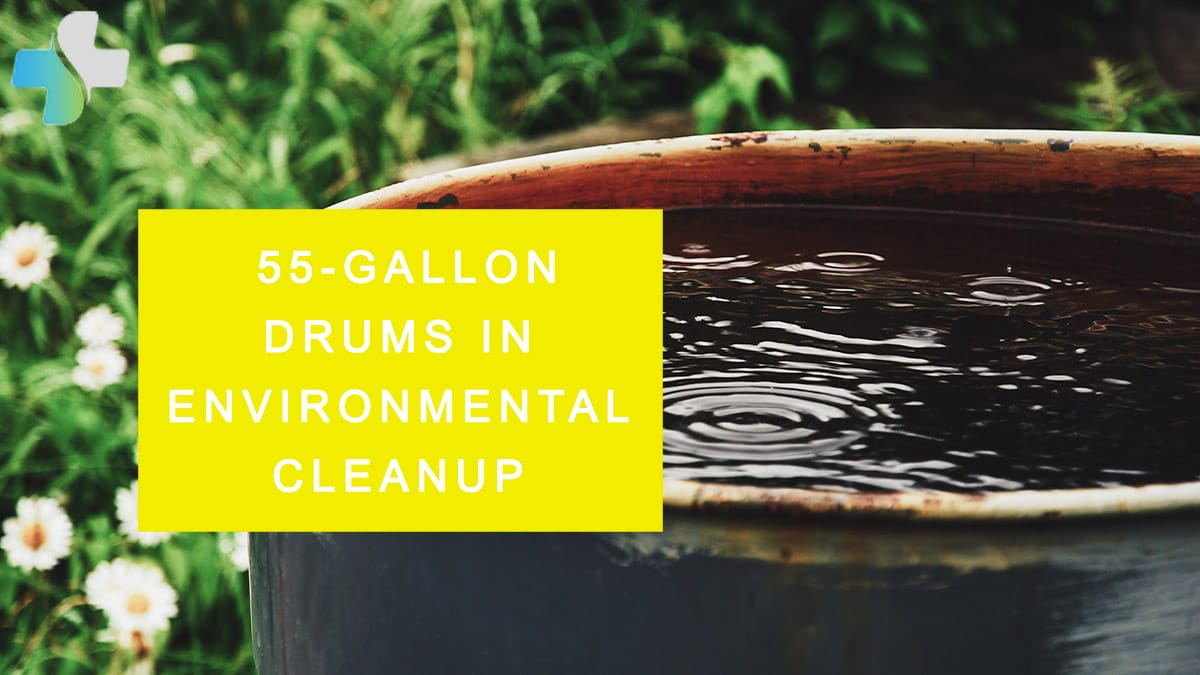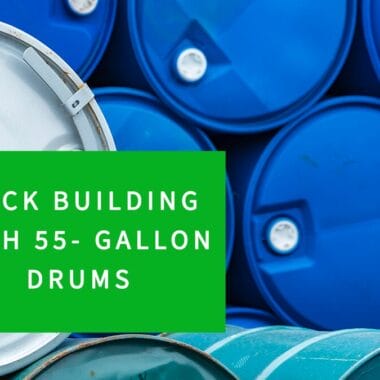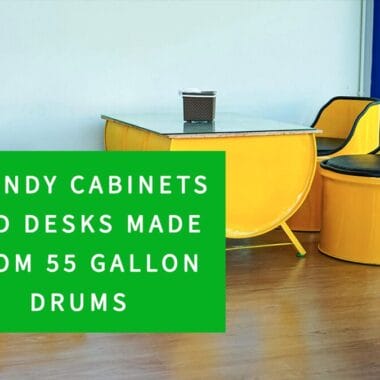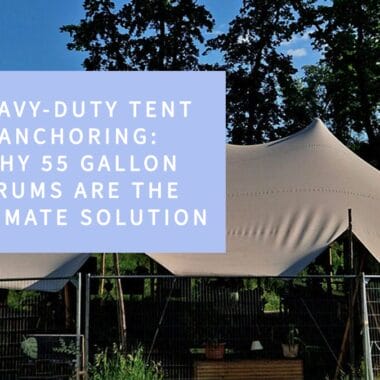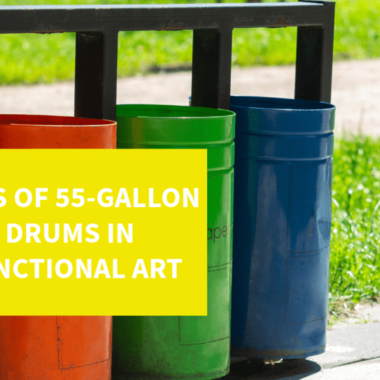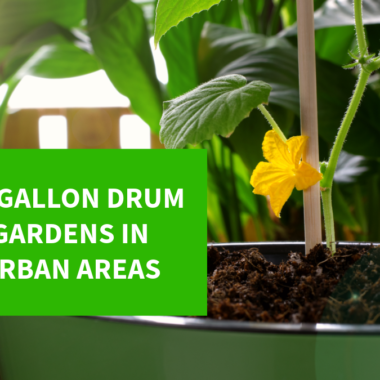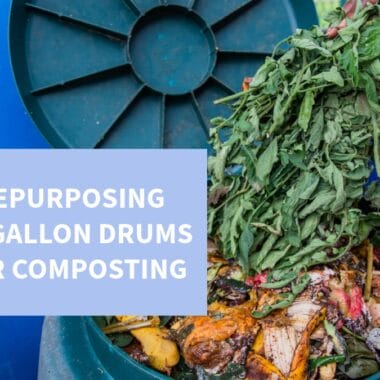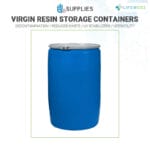The durability and functionality of 55-gallon drums have made them extensively useful in environmental cleanups for transporting and storing hazardous materials, contaminated and collected waste, and recycling and reusing them in cleanups.
55-Gallon Drums in Environmental Cleanup
55-gallon drums are large containers initially used to store and transport liquids and solids, such as oil, chemicals, and waste materials. Plastic and steel drums have evolved to meet the demands of various environmental challenges. Made from solid materials like steel, drums are ideal for handling potentially hazardous substances. With the growing awareness of environmental issues, the design of 55-gallon drums has improved and evolved significantly over the years. Innovations included double-walled designs and corrosion-resistant coatings, reducing the risk of leaks and environmental damage. Additionally, high-density polyethylene (HDPE) drums offer a lightweight and durable alternative to traditional steel drums, providing better resistance to chemicals and corrosion.
Role in Hazardous Waste Management
In environmental cleanups, 55-gallon drums became essential for managing and disposing of hazardous waste and materials. Drums safely transport waste from cleanup sites to storage and disposal facilities during cleanup operations. Their robust design ensures that hazardous materials are contained securely, preventing accidental spills during the transit process. They hold chemicals, oils, and other toxic substances from leaking and causing contamination to the environment. 55-gallon drums provide a reliable means for this type of transportation, ensuring that hazardous waste is managed without risk to the environment or public health.
In many cleanup projects, especially those involving soil remediation or water treatment, collected waste like contaminated soil or sludge requires temporary storage. These drums offer a convenient and secure storage solution until the waste is ready to be processed or disposed of properly. 55-gallon drums are generally on-site for various waste management processes. For instance, in bioremediation projects, contaminated soil or water might be placed in drums containing microbes that break down pollutants. This method effectively helps with treating organic contaminants like petroleum hydrocarbons.
Use in Environmental Remediation Projects and Emergencies
Drums are also widely used in environmental remediation projects, such as cleaning contaminated soil and water. They are utilized for collecting and storing contaminated materials, such as soil or sludge before they are treated or disposed of. In some cases, drums are used on-site for bioremediation processes, where contaminants are biologically broken down. Quick and effective containment is crucial in incidents like oil spills or chemical leaks. 55-gallon drums are used by emergency response teams to quickly secure hazardous materials, helping to reduce the environmental impact.
Recycling and Reusing Drums in Environmental Efforts
A significant aspect of using 55-gallon in environmental cleanup is their potential for recycling and reuse. Many 55-gallon drums are designed to be repurposed and reused multiple times, reducing their production’s environmental impact and waste. This reuse aligns with the principles of reducing waste, reusing resources, and recycling materials, emphasizing the importance of sustainability in industrial practices. 55-gallon drums, whether UN-rated or non-UN-rated, come in several colors, which determine the contents they store. Knowing the meaning of drum colors is essential when upcycling to be aware of potential hazards and handle them carefully.
Recycling 55-gallon Drums
Made of recyclable materials like high-density polyethylene (HDPE) or steel, the materials of these drums can be recovered and repurposed. This reduces the need for new raw materials and production processes. Recycling HDPE and steel drums requires less energy than producing new drums from raw materials. This energy efficiency translates to a lower carbon footprint and less environmental impact. By recycling old 55-gallon drums, the waste volume sent to landfills is significantly minimized. This is particularly significant for environmental cleanup projects where reducing secondary waste is a priority.
Reusing and Repurposing Drums
Reusing and repurposing 55-gallon drums extends their lifecycle, maximizing their utility while minimizing their environmental impact. Drums that are still intact can be cleaned and repurposed for similar uses or DIY home projects. Reusing drums also helps decrease the demand for new drum production, conserving resources and reducing industrial emissions associated with the manufacturing process. Repurposed drums can serve many unique purposes when cut, welded, or painted, including:
- Modern or eclectic decor and furniture
- Sustainable planters and garden beds
- Rainwater collection systems
- Art pieces
- Steelpan instruments
- BBQ smokers
- Storage containers
Drum colors come in red, yellow, green, blue, white, black, orange, purple, and gray. This versatility expands their use for creative projects and pieces, enhancing their sustainability and lowering their environmental impact. Reconditioning drums often involves professional cleaning and refurbishing to ensure the container is safe and free from its previous contents. The trend of reconditioning and repurposing old drums is a prime example of the circular economy in action. A circular economy keeps materials, products, and services in circulation for as long as possible.
The Continuing Role of 55-Gallon Drums in Ecological Protection
55-gallon drums have been and continue to be indispensable in ecological protection and environmental management. Remaining essential for the storage and transport of liquids, oils, chemicals, and hazardous waste, 55-gallon drums are significant for preventing environmental contamination. Drums are essential for collecting waste and contaminated materials in ecological cleanup and remediation, including oil spills or industrial site cleanups. Their evolution reflects a growing commitment to environmental protection and sustainability, including research into using recycled materials or developing biodegradable alternatives. In improving the sustainability of 55-gallon drums, industries can adapt to meet the changing needs and challenges of waste management and environmental remediation to protect and preserve the environment.
References:
- National Library of Medicine, 2011. Microbial Degradation of Petroleum Hydrocarbon Contaminants: An Overview.
- United States Environmental Protection Agency. Cleanup and Remediation.
- National Insitute of Environmental Health Sciences. Emergency and Disaster Response to Chemical Releases.
- United States Environmental Protection Agency. What is a Circular Economy?

